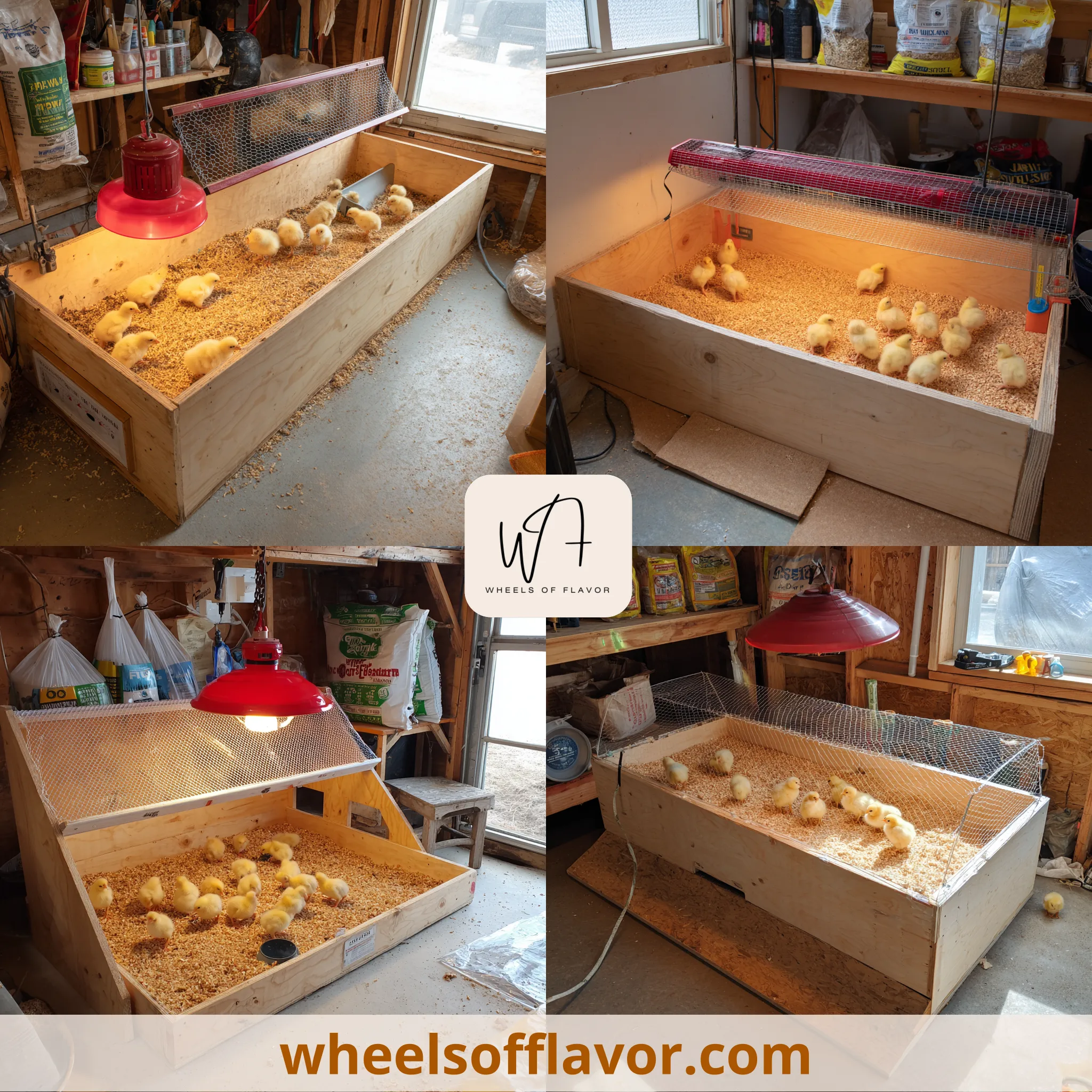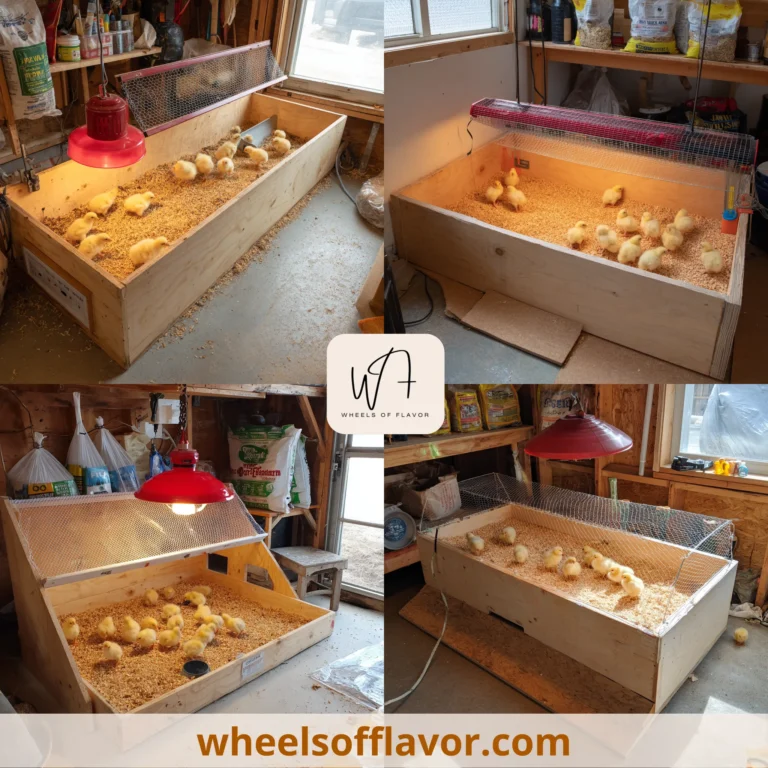
Raising healthy chicks from day one is a rewarding yet challenging endeavor for poultry enthusiasts, and having the right brooder setup is absolutely crucial. A brooder serves as a warm, safe, and controlled environment that mimics a mother hen’s care, providing the ideal conditions for young birds to thrive during their most vulnerable weeks. Without proper brooder ideas, chicks can face risks like temperature fluctuations, poor ventilation, or inadequate space, leading to stress, illness, or even mortality. This makes investing time in planning and implementing effective brooder solutions not just a matter of convenience but a fundamental aspect of responsible animal husbandry. In this article, we explore a range of brooder ideas that cater to various needs, from small backyard setups to larger operations, ensuring your feathered friends get the best start in life. By focusing on practicality, affordability, and animal welfare, these ideas will help you create a nurturing space that supports growth and health. Whether you’re a beginner or an experienced keeper, embracing innovative brooder designs can transform your poultry-raising experience, making it more enjoyable and successful. Let’s dive into how you can build or choose a brooder that meets all your chicks’ needs while fitting seamlessly into your home or farm environment.
Essential Brooder Ideas for Temperature Control
Maintaining the correct temperature is one of the most critical aspects of any brooder setup, as chicks cannot regulate their body heat effectively in their first few weeks of life. Ideal brooder ideas for temperature control start with a reliable heat source, such as a heat lamp or brooder plate, which should be adjustable to provide a gradient from warm to cooler areas. For example, a common approach is to use a 250-watt infrared heat lamp suspended above the brooder area, ensuring it's secure and out of reach to prevent fires or injuries. The temperature should be around 95°F (35°C) for the first week, decreasing by 5°F each week until the chicks are fully feathered. To monitor this, place a thermometer at chick level and observe their behavior; if they huddle under the lamp, it's too cold, but if they avoid it, it's too hot. Incorporating brooder ideas like insulated walls or draft guards can help stabilize temperatures, especially in cooler climates. Additionally, using materials like pine shavings for bedding provides insulation and absorbs moisture, reducing the risk of chill. For larger setups, consider brooder ideas that include thermostatically controlled heaters for precision. Always prioritize safety by keeping heat sources away from flammable materials and ensuring proper ventilation to prevent overheating. By focusing on these temperature-related brooder ideas, you'll create a cozy environment that promotes healthy growth and reduces stress for your chicks.
Space-Efficient Brooder Ideas for Small Areas
Not everyone has ample space for raising poultry, but with clever brooder ideas, you can create a functional and compact setup right in your home or garage. Space-efficient brooder ideas often involve repurposing everyday items, such as using a large plastic storage tote or a cardboard box lined with waterproof material. These containers are easy to clean and can be equipped with a mesh lid for ventilation and security. For vertical space, consider brooder ideas that include multi-level designs, but ensure any elevated areas have ramps or steps for chick access to prevent falls. A popular brooder idea is to build a custom wooden brooder with removable panels for easy cleaning and expansion as the chicks grow. Aim for at least 0.5 to 1 square foot per chick initially, increasing as they mature. To maximize space, incorporate brooder ideas like corner feeders and waterers that reduce clutter, and use hanging heat lamps to free up floor area. For urban settings, brooder ideas might include portable units on wheels, allowing you to move the brooder indoors or outdoors as needed. Always ensure the space is draft-free and well-lit, with natural or artificial light to support chick activity. By adopting these space-saving brooder ideas, you can raise healthy poultry even in limited areas, making poultry keeping accessible to more people. Check out resources from reputable sources like Backyard Chickens for more inspiration on compact setups.
DIY Brooder Ideas on a Budget
Raising chicks doesn't have to break the bank, and with some creativity, you can implement cost-effective brooder ideas using materials you already have or can acquire cheaply. DIY brooder ideas often start with simple containers like large cardboard boxes, plastic bins, or even old kiddie pools, which can be transformed into functional brooders with minimal investment. For heat, instead of buying expensive equipment, consider using a heat lamp with a clamp or a brooder plate made from repurposed items, but always prioritize safety to avoid hazards. Bedding is another area where brooder ideas can save money; use pine shavings, straw, or even shredded paper instead of commercial products, ensuring it's absorbent and non-toxic. To build a DIY brooder, gather materials like wood scraps for framing, hardware cloth for ventilation, and a thermometer for monitoring. A great brooder idea is to create a multi-use setup that can be disassembled and stored, reducing long-term costs. For feeding and watering, repurpose shallow dishes or DIY nipple waterers to minimize waste and expense. Incorporate brooder ideas that emphasize sustainability, such as using solar-powered lights for additional warmth in sunny areas. By embracing these budget-friendly brooder ideas, you can provide a safe environment for your chicks without overspending, making poultry raising more accessible. For more DIY tips, explore internal resources like https://wheelsofflavor.com/diy-projects for step-by-step guides.
Conclusion
In summary, implementing effective brooder ideas is fundamental to successful poultry rearing, ensuring that your chicks grow up healthy, happy, and strong. From temperature control and space efficiency to budget-friendly DIY solutions, each aspect we've covered plays a vital role in creating a nurturing environment. By focusing on practical and innovative brooder ideas, you can overcome common challenges like overcrowding, temperature fluctuations, and high costs, making the process more enjoyable and less stressful. Remember, a well-designed brooder not only supports the physical needs of chicks but also contributes to their behavioral development, reducing issues like pecking or anxiety. As you move forward, consider how these brooder ideas can be adapted to your specific situation, whether you're raising a few birds in a suburban backyard or managing a larger flock. The future of poultry keeping is leaning towards more sustainable and humane practices, so staying informed about new brooder technologies and methods will keep you ahead of the curve. For ongoing inspiration and updates, continue to explore resources and communities dedicated to animal husbandry. Start small, experiment with different brooder ideas, and watch your poultry thrive – it's a rewarding journey that begins with the right foundation.
Frequently Asked Questions
Q: What is the ideal temperature for a brooder, and how do I maintain it?
The ideal temperature for a brooder starts at around 95°F (35°C) for the first week of a chick's life, decreasing by about 5°F each week until the chicks are fully feathered, usually by 4-6 weeks. To maintain this, use a heat source like a heat lamp or brooder plate, and monitor with a thermometer placed at chick level. Adjust the height of the heat source or use a thermostat for precision. Observe chick behavior: if they huddle together, it's too cold; if they avoid the heat, it's too hot. Ensure proper ventilation to prevent overheating and use insulated materials if needed.
Q: Can I use a cardboard box as a brooder, and what are the limitations?
Yes, a cardboard box can be a simple and effective brooder idea, especially for beginners or small setups. It's inexpensive, readily available, and easy to modify. However, limitations include its lack of durability—it can become soggy from moisture and may need frequent replacement. Cardboard is also flammable, so keep heat sources at a safe distance and never leave them unattended. For better results, line the box with a waterproof material like plastic, and ensure adequate ventilation by cutting holes covered with mesh. It's best for short-term use or as a temporary solution before upgrading to a more permanent brooder.
Q: How much space do chicks need in a brooder?
Chicks need ample space to move around, eat, and drink without crowding. A general rule is to provide at least 0.5 to 1 square foot per chick for the first few weeks, increasing to 2-3 square feet as they grow. Overcrowding can lead to stress, disease, and behavioral issues like feather pecking. In your brooder ideas, plan for expansion or use modular designs that allow you to increase space easily. Always ensure there's enough room for feeders, waterers, and a heat gradient, with areas for resting and activity. Regularly clean the space to maintain hygiene and comfort.

